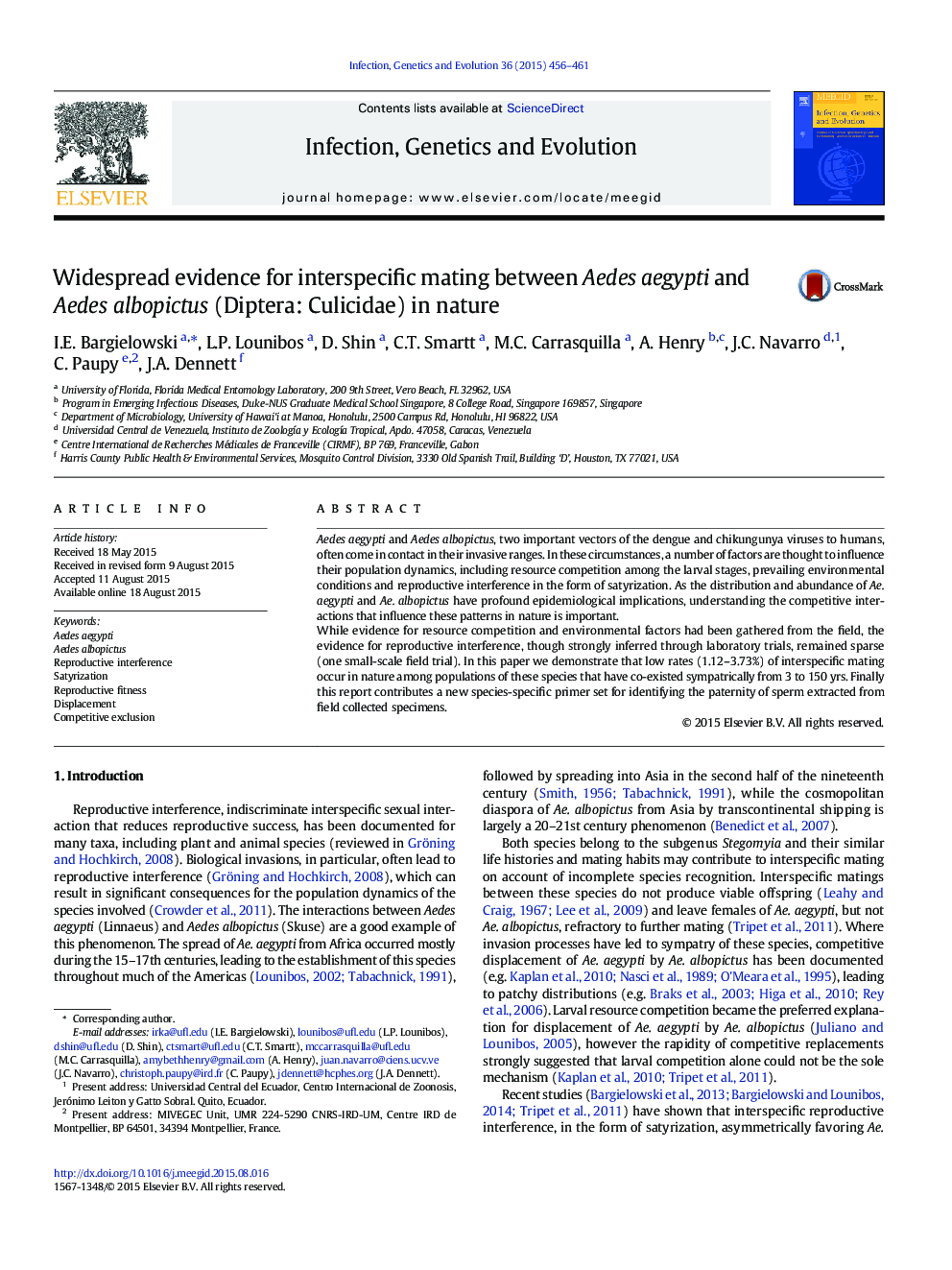| Article ID | Journal | Published Year | Pages | File Type |
|---|---|---|---|---|
| 5908640 | Infection, Genetics and Evolution | 2015 | 6 Pages |
â¢Reproductive interference may influence population dynamics of Ae. aegypti and Ae. albopictus.â¢Development of a new primer set for determining paternity of sperm samplesâ¢Evidence of cross-mating between Ae. aegypi and Ae. albopictus from four countries
Aedes aegypti and Aedes albopictus, two important vectors of the dengue and chikungunya viruses to humans, often come in contact in their invasive ranges. In these circumstances, a number of factors are thought to influence their population dynamics, including resource competition among the larval stages, prevailing environmental conditions and reproductive interference in the form of satyrization. As the distribution and abundance of Ae. aegypti and Ae. albopictus have profound epidemiological implications, understanding the competitive interactions that influence these patterns in nature is important.While evidence for resource competition and environmental factors had been gathered from the field, the evidence for reproductive interference, though strongly inferred through laboratory trials, remained sparse (one small-scale field trial). In this paper we demonstrate that low rates (1.12-3.73%) of interspecific mating occur in nature among populations of these species that have co-existed sympatrically from 3 to 150Â yrs. Finally this report contributes a new species-specific primer set for identifying the paternity of sperm extracted from field collected specimens.
